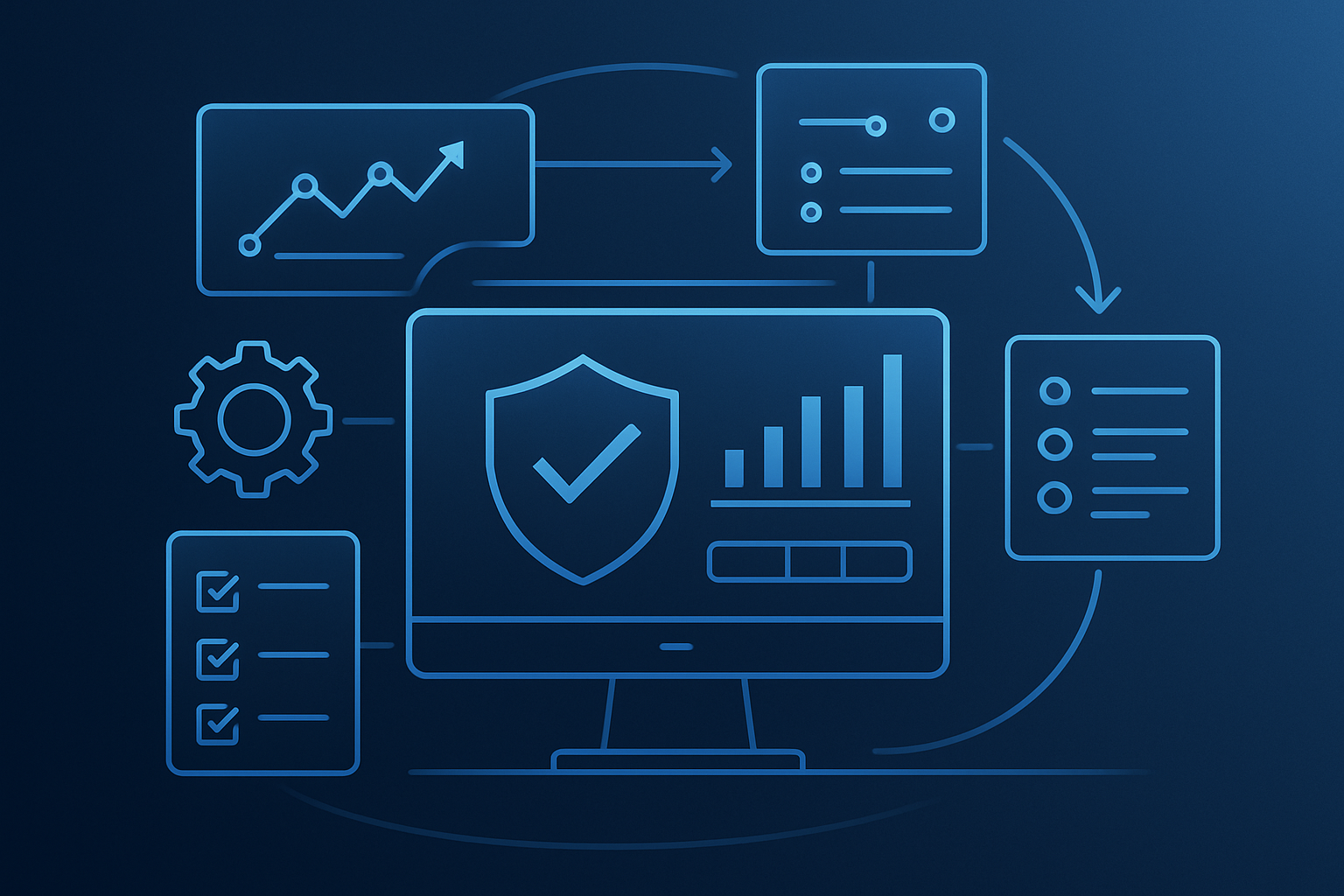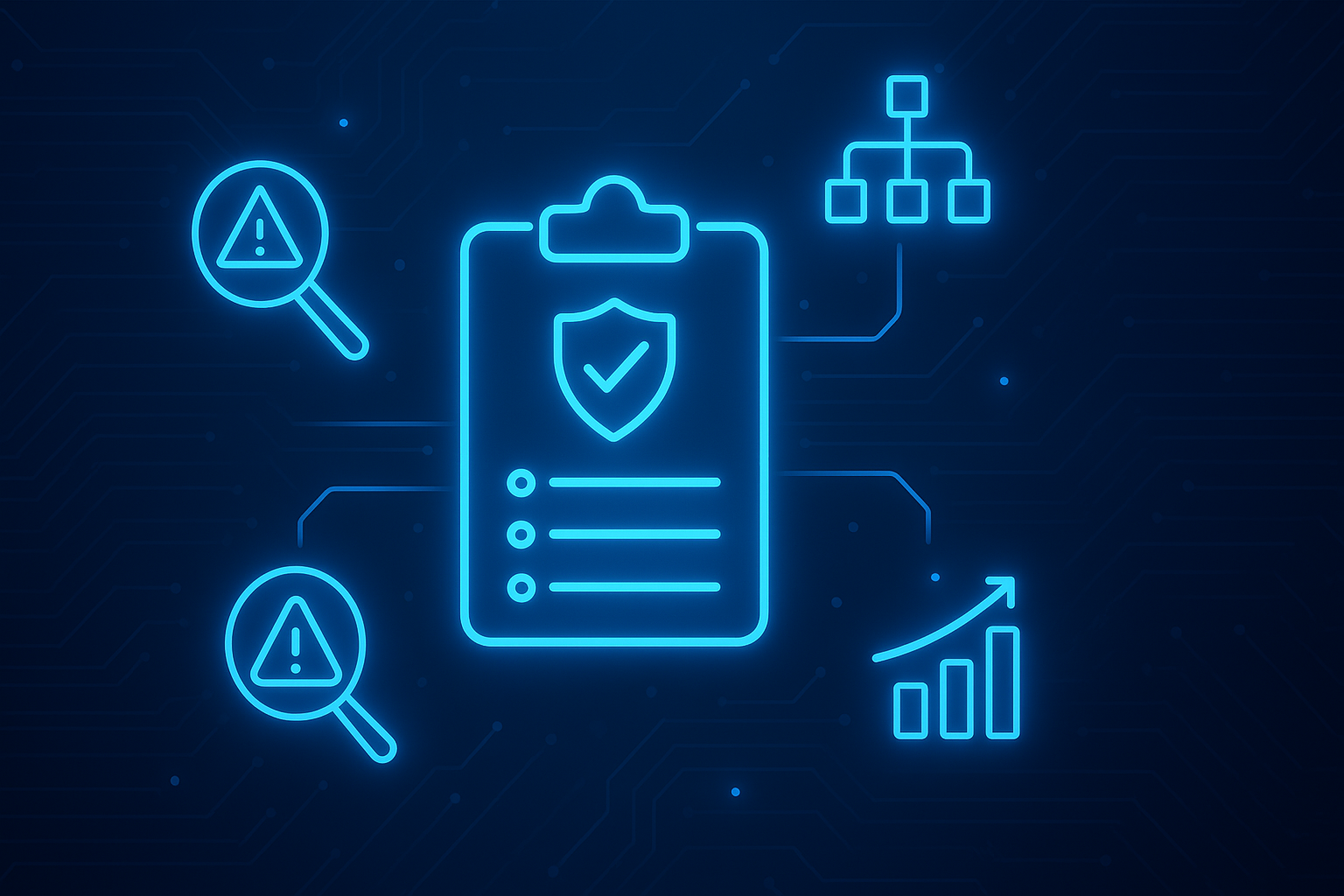As cybersecurity continues to become a more significant focus for organizations, other C-suite leaders must get up to speed on cyber risks and their impact on the organization's success. The Chief Information Officer, or CIO, is traditionally responsible for the IT security program. Yet, as cybersecurity grows to impact every facet of the business, the CIO needs to incorporate cybersecurity risk management into their practices.
As cybersecurity is folded into CIO operations, there are many things a CIO must track:
- Company training and awareness of cybersecurity practices and attack vectors
- New and existing mandated regulations
- The steps to mature the company’s cyber risk management program maturity
- Implementing the right tools and procedures to safeguard the organization
Metrics for the CIO in Risk Management & Reporting
A CIO cybersecurity dashboard should include real-time insights into the security posture, potential risks, and their associated impact on the organization.
The number of successful/attempted cyber attacks: This metric provides insight into the volume of cyber attacks directed at an organization and the effectiveness of its security measures in blocking these attacks. By monitoring this metric, a CIO can determine if their organization is at risk and prioritize security efforts accordingly.
Types of cyber-attacks: Understanding the types of cyber attacks directed at an organization is critical for developing an effective security strategy. If a CIO sees a high volume of phishing attacks, this may guide them to invest in employee education and cyber awareness programs.
Vulnerability scan results: Regular vulnerability scans can help a CIO identify potential weaknesses in their organization's systems and networks. By monitoring this metric, a CIO can ensure that gaps are addressed promptly and that the organization's systems and networks are secure.
Endpoint security: Monitoring endpoint security metrics, like the number of compromised endpoints, can help a CIO ensure that their organization's systems and data are protected from malware and other threats.
User behavior: Monitoring user behavior, such as the number of suspicious logins or the frequency of data transfers, can help a CIO detect potential security incidents.
Incident response time: The speed at which an organization responds to a security incident is critical for minimizing the damage and reducing the risk of data loss. By monitoring this metric, a CIO can ensure that their organization has the appropriate processes and resources for a comprehensive response.
Risk and compliance: Monitoring compliance with cyber risk frameworks and standards is critical for gap analysis and reducing risk exposure.
Cloud security: As more organizations move to the cloud, monitoring cloud security metrics, such as the effectiveness of cloud security controls, is becoming increasingly important. By tracking these metrics, a CIO can ensure that their organization's data and systems are secure and organized in the cloud.
Data backup and recovery: Regular data backups and disaster recovery planning are critical for protecting an organization's data during a security incident or natural disaster.
These metrics help the CIO keep track of the overall health of the security program. When creating a board presentation, CIOs should balance these technical metrics with cyber-risk-related data that communicates the overall security posture of the organization and areas of improvement with plans for mitigations.
CIOs should include metrics on internal gap analysis to show which business units or departments can be improved upon and can help prioritize investments. In addition, CIOs should report on how the organization performs compared to its peers and the risk impact of relevant cyber threats. By balancing technical details, CIOs will better communicate with business leaders with clear and concise cyber risk-related data.
Prepare for Board Presentations with Dashboards
Monitoring cybersecurity metrics is essential for every CIO to understand their organization's security posture and helps lead cyber-informed conversations and decision-making. Considering the many metrics a CIO must monitor, an automated dashboard like the CyberStrong Executive Dashboard streamlines the tracking process with real-time updates that communicate risk in terms that security professionals and senior leaders can understand. A dashboard that centralizes all pertinent cyber-risk data for upper management is an invaluable asset for CIOs to bridge the gap between business and technical operations.
Learn more about CyberStrong’s automated dashboards in this webinar. Contact us to learn how CyberSaint can guide and mature your security operations.





.png)
.png)
.png)
%201.png)
.png)




